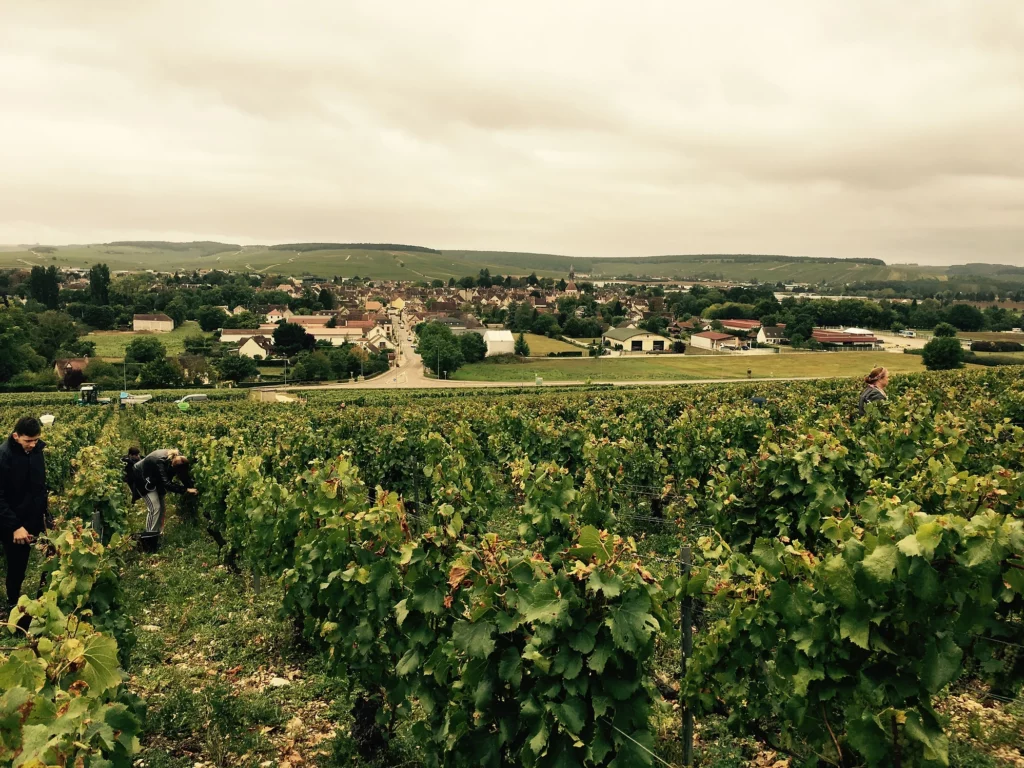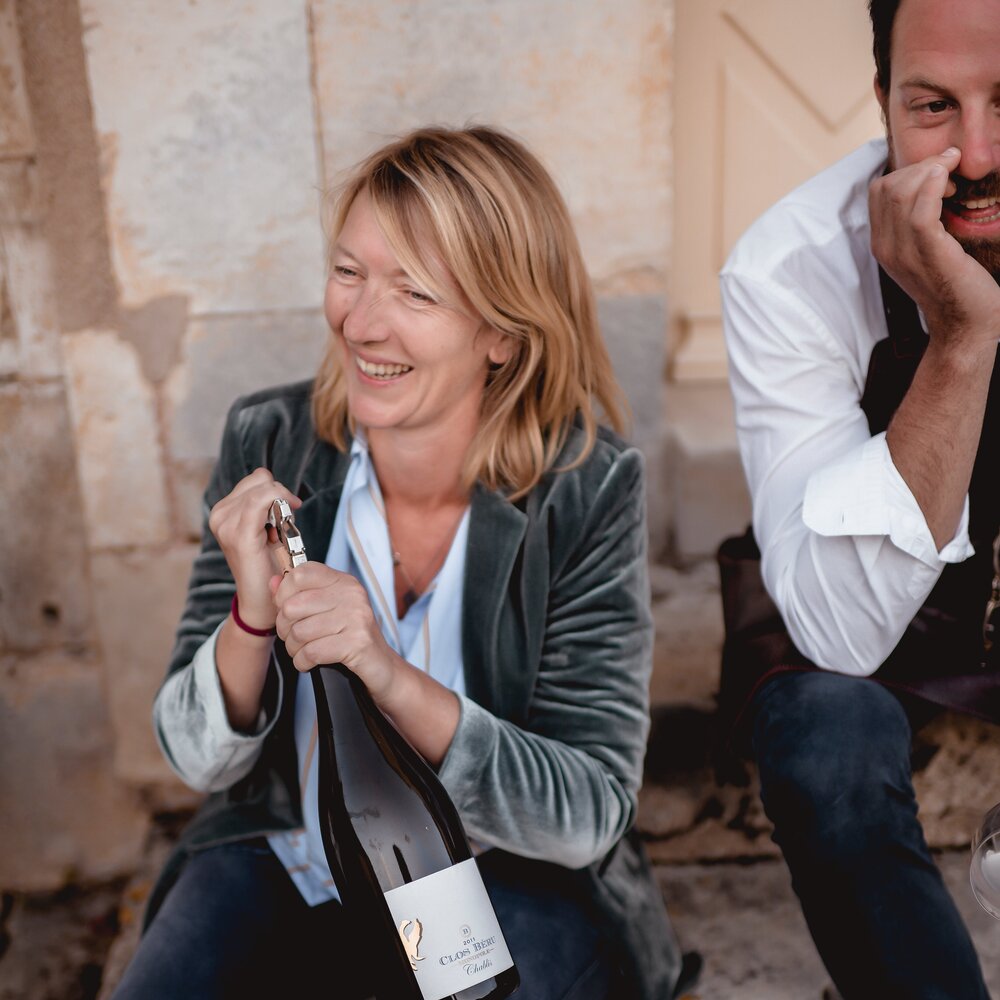Burgundy!
A name that immediately conveys finesse. Chardonnay and Pinot Noir at the highest level, but also Aligoté and Gamay contribute to the region's amazing portfolio. Names like Côte d'Or, Beaune, Pouilly-Fuissé and Chablis are on the minds of all wine lovers and on the wine lists of the most important restaurants.
But what is the reason for Burgundy's undying fame? As usual, we can try to trace various factors, from soil composition to socio-historical issues. To grasp, at least in part, the complexity of this fragmented territory, we must proceed carefully, step by step.

Step one: Chablis.
Chablis is located quite to the north and is separated from the other Burgundy regions by the Morvan hills. It has more in common with the climate of Champagne, for example, than with the Côte d'Or.
Chardonnay is "the" grape variety of Chablis. The only one authorised by the Chablis Appellation d'Origine Contrôlée and, for some critics, the purest expression of this variety. Clearly, the cold climate strongly influences the harvest: less fruity and more acidic. Frost is one of the highest risks in the area, with the 1957 vintage primate, when only 132 bottles were officially released.
But what all Grands and Premiers Crus of the region is defined, the goût de pierre à fusil, a subtle flinty taste. It is due to the best kept secret of Chablis: the Kimmeridge sound. This ancient soil can date back to over 180 million years ago. It is a calcareous soil type consisting of a mixture of limestone, clay and fossilised oyster shells.
Well, cold climate and high minerality... but don't think that Chablis is a harsh wine! The location of the heart of Chablis, its Grands and Premiers Crus, makes all the difference.

Photo: Domaine d l'Enclose
A place in the sun.
If you're in one of France's northern wine regions, you want to make sure your best vineyards get the best light.
All seven Grands Crus are situated on a south-west facing hill near the village of Chablis and follow the course of the river Serein. Each of them has different notes and styles, but what they all share is an intensity of flavour combined with a lively minerality. And these two together form the basis for long ageing and complexity. Grand Cru Chablis can even age for 30 or 40 years.

The 40 Premiers Crus differ somewhat more in exposure. Some of them are close to the Grands Crus, others are on the opposite side of the river Serein. But they share the same Kimmeridge clay soil of the Grands Crus and a similar finesse, although with less intense flavours.
The generic AOC Chablis is the largest in the region, followed by the AOC Petit Chablis. Most of them, especially the Petit Chablis vineyards, are on Portlandian soil, which is similarly structured but younger than the Kimmeridge soil.
New and old style.
Soil and exposure are obviously not the only factors that influence wine in Chablis. Human intervention in winemaking also plays a major role.
Historically, the Chablis wines stored in large, used barrels that were practically neutral. Nowadays, wooden barrels are replaced by stainless steel tanks, which are easier to clean.
There is a movement of "modernists" who use new oak barrels to give their wines more structure, mainly Grands and Premiers Crus. Meanwhile, "traditionalists" plead against this practice and avoid oak to preserve the minerality and freshness of the terroir.
Are you getting thirsty?

Ok, you now have an idea of the complexity of the area. And we're only talking about one grape variety! Soil, exposure and human intervention in winemaking can transform Chardonnay into something different every time.
The only way to fully understand Chablis is to taste it 🙂
First good news: even though Chablis is already a region and style with an established reputation, you can still get wines that can compete in quality with the Côte d'Or, but at a lower price. So why not take advantage of it?
Second good news: we have some great wineries for you that can give you a comprehensive overview of the region:
Domaine de l'Enclos
You can do the Domaine de l'Enclos consider a relatively young winery, as the two brothers Romain and Damien Bouchard only released their first harvest in 2016. But don't be fooled, they have already been experimenting in their father's cellar since 2005, working with some vineyards (Grand Crus Le Clos) planted by their grandfather in 1964.
They are the perfect choice to have a broad approach to Chablis. The wines range from Petit Chablis to Grands Crus, with some Premiers Crus like La Fourchaume that can compete with the highest AOCs.
Spontaneous fermentation of the grapes with their own yeast and no added sulphur to express all the nuances of the terroir. A team of 12 people works in the winery all year round. Only perfectly ripened grapes have access to the cellar.
This is the kind of commitment we look for here at Living Wines!

Château de Béru
Château de Béru lies to the east of the region, not far from Fleys, and gives an insight into what is happening outside the classic Chablis area.
Since 2004, Athenaïs de Béru, the daughter of Èric and Laurence who replanted the vineyards in the late 1980s, has been raising the quality and reputation of the winery.
Cultivation is carried out according to the biodynamic guidelines. Horses are still used in the vineyards, biodiversity is encouraged and the vines are treated as gently as possible. When you immerse yourself in the ecosystem of Château de Béru, you see vines growing in balanced harmony between fruit trees and bushes.

Each vintage is treated differently, playing with harvest dates, maceration lengths and pressings. This artisanal approach, together with a deep understanding of the terroir, allows for wines that are able to express the best of the Chardonnay grapes.
A "not to be missed" wine is the Chablis Clos Béru Monopole. Located right next to the castle, it sits on the famous Kimmeridge limestone. Five hectares form the heart of the winery. Mineral-cool wines with a powerful character that can easily be compared to the most famous Grands Crus Chablis.

Château de Béru can be considered a "wild card" of Chablis, a great addition to the portfolio of Living Wines!
That's all for now, my dears! The next step will take us to a little-noticed part of Burgundy: Mâconnais & Beaujolais.
Text: Jonathan Gobbi
Photos and illustrations: Château de Béru and Domaine de l'Enclos
